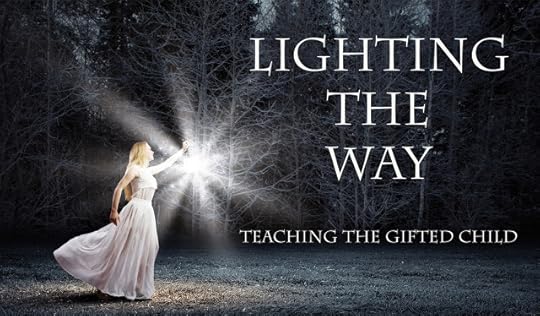#LTW: Connecting Education in a Meaningful Way to the Gifted Learner's Mind

Welcome back! The past few weeks we have been discussing the brain differences between gifted and nongifted students. If you have been following along with this series then you can see why gifted students become so easily frustrated when taught in a traditional American classroom. One of the best ways educators can help gifted students find success is through Connective Learning.
Connective Learning is the process of an educator helping learners build networks within their brains. Siemens (Laureate, 2012) identified three levels of Connective Learning as 1) biological, learning how to make connections, 2) conception, how ideas are related to each other and 3) external/social, how to make meaningful connections between people and data. Treffinger (2004) found gifted students are fast learners but have difficulty connecting the vast amount of information they process.
 Connective Learning would be an important educational model for the gifted educator to utilize
Connective Learning would be an important educational model for the gifted educator to utilize within the classroom. Gifted students possess the ability to process greater amounts of information and enjoy academic challenges. Yet, while the know the information they sometimes do not understand how to use the information they have gleaned in real life situations. Siemens (Laureate, 2012) stated connective learning requires mashing up several ideas in order to create a new idea. The mashing up of ideas allows the gifted learner to creatively utilizes the information they have processed to create understanding and unique solutions to problems.
Sometimes a gifted student will lose focus on academic lessons if they deem the material being presented doesn’t have any real-life applications. Connective Learning allows the gifted learner to take an active part in connecting new and old information into more meaningful associations. Siemens (Laureate, 2012) found the educator’s role in a connective learning environment is to assist learners in building brain-based networks that can create clarity and clear thinking.
ReferencesAsher, J. (2006) Cortex Matures Faster in Youth with Highest IQ. Retrieved from National Institute of Health website: http://www.nimh.nih.gov/news/science-...
Bruning, R. H., Schraw, G. J., & Norby, M. M. (2011). Cognitive psychology and instruction (5th ed.). Boston, MA: Pearson.
Butnik, S (May/June 2013). Understanding, Diagnosing and Coping with Slow Processing Speed. Retrieved from http://www.davidsongifted.org/db/Arti...
Geake, J. (2009). The Brain at School: Educational Neuroscience in the Classroom. Retrieved from ttps://books.google.com/books?id=jwNFBgAAQBA...
Gross, G. (2013, October 21). Who is the gifted Child [Web log post]? Retrieved from http://www.huffingtonpost.com/dr-gail...
Laureate Education, Inc. (Executive Producer). (2012). Anatomy of the brain. Baltimore, MD: Author
Laureate Education, Inc. (Executive Producer). (2012). Connectivism learning theory. Baltimore MD: Author.
Monru, J. (2013). High-Ability Learning and Brain Processes:How Neuroscience can help us to understand how gifted and talented students learn and the implication for teaching. Paper presented a the Research Conference, Australia
Mrazik, M., & Dombrowski, S. C. (2010). The Neurobiological Foundations of Giftedness. Roeper Review, 32(4), 224-234. doi:10.1080/02783193.2010.508154
Sword, L. (2011). I think in pictures, you teach in words: The gifted visual-spatial learner. Tall Poppies Retrieved from http://www.giftedchildren.org.nz/nati...
Treffinger, D (Ed.). (2003). Creativity and Giftedness. Thousand Oaks, CA: Corwin Press.
Published on July 20, 2015 13:26
No comments have been added yet.



